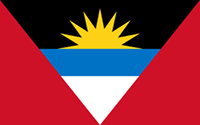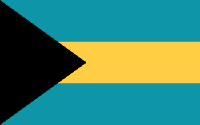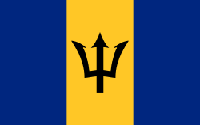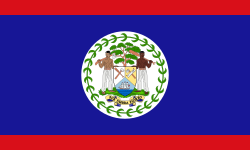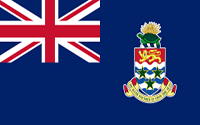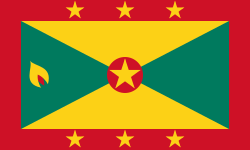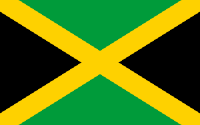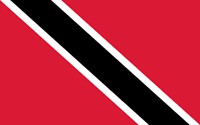
|
 |
 The SPAW Protocol to the Cartegena Convention
1. Overview of the SPAW Protocol
Although each of the Cartagena Convention''s protocols are highly important to multinational collaborative efforts to protect Caribbean coral reefs and control transboundary impacts that harm marine ecosystems, the focal areas of the Protocol Concerning Specially Protected Areas and Wildlife in the Wider Caribbean Region (SPAW Protocol) are particularly pertinent to regulating human activities that are susceptible to causing the most immediate and direct types of harms to coral reefs. These focal areas include:
- Marine Protected Areas and Wildlife
- Threatened and Endangered Marine Species
- Marine and Coastal Ecosystems
- Guidelines for Protected Areas and Species
2. General obligations of Contracting Parties to the SPAW Protocol
Contracting Parties (member states) to the SPAW Protocol have committed to performing a range of obligations in connection with safeguarding flora and fauna within their respective borders, including corals and other endangered and threatened species of marine life. These commitments must be (and in many cases have been) integrated into national policy agendas as well as the substantive and procedural requirements contained in each country's legislation.1 Legislative requirements must be supported by adequate enforcement provisions, including clearly delegated authority for responding to and prosecuting violations.2
Parties to the SPAW Protocol have committed to fill a set of general obligations.3
First, each Party must implement sustainable measures to protect, preserve, and manage areas that require special protection, as well as threatened or endangered species of flora and fauna. Second, the Parties must regulate activities that have adverse impacts on these areas and species, prohibiting them where necessary. The means of enforcing such measures must be within with each Party's competence and in accordance with international law. Third, each Party must, consistently with their legal system, manage each species of flora and fauna with the aim of preventing them from becoming threatened or endangered.
A key requirement of the SPAW Protocol is that Contracting Parties must, "when necessary", designate protected areas within their sovereign territories in order to conserve the natural resources of the Wider Caribbean Region. In particular, these areas must be established to conserve, maintain, and restore (a) representative types of coastal and marine ecosystems to ensure long-term viability and genetic diversity; (b) ecosystems critical to the survival and recovery of threatened and endangered species; (c) the productivity of ecosystems that provide economic or social benefits upon which local populations depend; and (d) areas providing a range of values, particularly areas whose biological processes are essential to the functioning of the Wider Caribbean ecosystems.4
3. Specific obligations of Contracting Parties to the SPAW Protocol
In addition to the above, each Party must commit to progressively regulating or prohibiting—as capacity permits—a range of harmful or potentially harmful activities elaborated by Article 5 of the SPAW Protocol. These activities include:5
- Dumping or discharges of wastes that may endanger protected areas.
- Disposal or discharges that cause pollution, emanating from human coastal structures and developments.
- Ship traffic and the stopping and anchoring of vessels that may adversely impact protected areas.
- Fishing, hunting, taking, or harvesting of endangered or threatened species, their parts, or byproducts.
- Activities that destroy or disturb endangered or threatened species.
- Introduction of non-indigenous species.
- Activities that modify the profile of the sea-bed or its subsoil (e.g., mining or dredging).
- Modification of watersheds, riverbanks, or excavation resulting in the release of sediments into protected areas.
- Archaeological activities and the removal of artifacts.
- Trade, import, and export of threatened and endangered species (or their byproducts) and archaeological artifacts.
- Industrial and other activities that are incompatible with uses envisioned by regulatory measures for protecting ecosystems.
- Tourism and recreational activities that may adversely impact threatened and endangered species.
- Other necessary measures for conserving, protecting, or restoring natural processes.
Parties to the SPAW protocol must also commit to additional measures for designating and protecting environmentally sensitive areas. Under Article 6 of the Protocol, each national government must adopt and implement planning, management, and enforcement measures for protected areas within their territories. These measures include, inter alia, management plans and guidelines, programs of scientific research, public awareness and education programs,procedures for involving local communities, financing mechanisms, training programs for staff, and other pertinent measures.6
4. Other obligations under the SPAW Protocol
Under the SPAW Protocol, the Parties are also required to establish inter-Party cooperation programs, as well as buffer zones for protected areas.7 Of particular importance to efforts for coral restoration is the requirement to formulate and adopt policies and plans for the management of the captive breeding and propagation of flora and fauna, including coral polyps.8 In addition, the Protocol mandates that the Parties coordinate their efforts through bilateral and multilateral actions, including treaties for the protection and recovery of migratory species, when necessary.
5. Annexes to the SPAW Protocol
The Protocol has three annexes that list threatened and endangered species of flora and fauna requiring special protection within the Wider Caribbean Region. Annex II (endangered and threatened species of fauna) lists four species of hard coral (Staghorn Coral, Elkhorn Coral, Boulder Star Coral, and Mountainous Star Coral). Annex III lists species that receive some protection under regulations, including all other species of hard corals, as well as fire corals, black corals, hydrocorals, and gorgonians (a group that includes sea fans and sea whips). Parties to the Protocol may allow limited harvesting of the species in this annex, subject to a regulated permitting process.
6. Accomplishments
To date, a wide variety of activities and programs have been carried out collaboratively by countries that have ratified or acceded to the SPAW Protocol. These include, inter alia, mutual cooperation through the Global Coral Reef Monitoring Network (GCRMN), monitoring the region's reefs in accordance with the Caribbean guidelines for coral reef biophysical monitoring; improving the management of marine protected areas (MPAs); joint protection of marine mammals; and coordinated efforts to build capacity across the region to address a range of sources of marine pollution.
– Back to the Cartagena Protocol –
– Back to Caribbean Law –
– Back to top of page –
Endnotes
1. A key objective of the SPAW Protocol is that its provisions are integrated into each Contracting Party's legislation in a manner that is compatible with the country-specific characteristics each Party's legal and regulatory systems. An example of this is Article 10 of the Cartagena Convention, which requires Parties to take 'all appropriate measures' to protect fragile ecosystems and habitats of
"depleted, threatened or endangered species," and establish protected areas. By their nature, protected areas require the force of law to ensure that their integrity is not violated, requiring both procedural (e.g., enforcement) and substantive (e.g., specific restrictions) legislative provisions.
2. International Waters Governance, Cartagena Convention, Stating that
"Under the SPAW Protocol, the Contracting Parties committed to protect and preserve – in a sustainable way – threatened or endangered species and areas of special value within the Convention Area by regulating and, when necessary, prohibiting activities that would have adverse effects on those areas and species. Furthermore, the Contracting Parties agreed to enact certain national measures for the protection of threatened and endangered flora and fauna." http://www.internationalwatersgovernance.com/cartagena-convention.html; Vijay Krishnarayan, Yves Renard & Lyndon John (2006) The SPAW Protocol and Caribbean Conservation: Can a Regional MEA Advance a Progressive Conservation Agenda?, Journal of International Wildlife Law & Policy, 9:3, 265-276, DOI: 10.1080/13880290600764950.
3. Protocol Concerning Specially Protected Areas and Wildlife (SPAW Protocol), Article 3.
4. SPAW Protocol, Article 4(a)-(d).
5. Id. at Article 5.
6. Id. at Article 6(2).
7. Id. at Articles 7-9.
8. Id. at Article 10.
|


